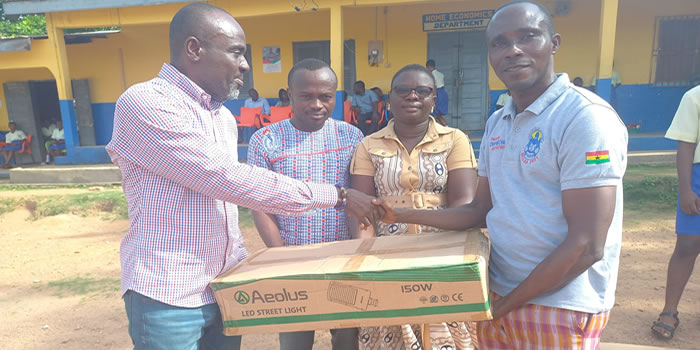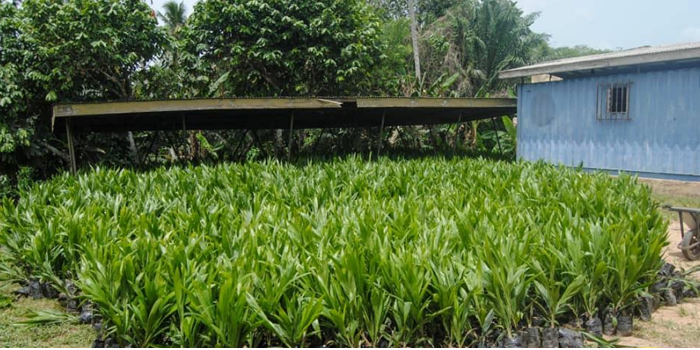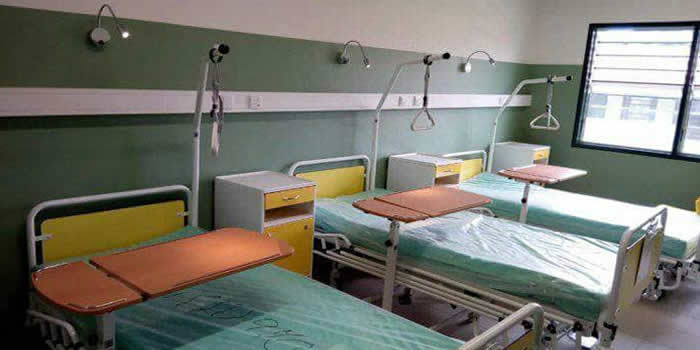

Production and Gainful Employment
This thematic area covers the agricultural, industry, commerce and the service sectors of the economy. The AEE District is largely an agrarian community. Agriculture is mainly carried out on subsistence basis. The District can also boast of a good number of micro scale enterprises, which include agro-processing and other economic activities in the service sector.These include ladies hairdressing, barbering, tele-communication services (mainly tiGO and then ONEtouch and areeba networks) and few guest houses and "chop" bars. These sectors constitute the key sources of employment to the people in the District. In other words, they constitute the main source of livelihood to the people.
Crops, Livestock and Poultry Production
Agriculture is the mainstay of the Ajumako-Enyan-Essiam District economy. About 80-90% of the district’s total population depends directly or indirectly on it. Thus, nearly every household in the district is engaged in farming or agricultural related activity, however farming in the district is largely carried out on small-scale basis. The average staple crops and cash crops cultivated are 1.24 and 0.025 acres (DAD, 2006) respectively. There are a total of 89, 000 hectares of arable land in the district out of which 48.3% (i.e. 43.000 acres) is currently cultivated. Shifting cultivation is widely practice though the sustainability of this methodology is increasingly being checked by the current population trends.
There are six different forms of land use patterns which a serving alternatively as checks on the fallow period inherent in the shifting cultivation practice. They include land under temporary crops, temporarily fallowed land, land under permanent crops, woodland and forest, all arable lands, and unused and underdeveloped potentially productive land. The main staples of the district are cassava, plantain, yams, maize and cocoyams. However in some zones like Ba, Enyan-Maim etc, the cultivation of vegetables is also a common practice Citrus, cocoa and oil-palm are the main cash crops of the district. Cocoa cultivation is mostly done in the Sonkwaa, Breman Essiam, Enyan Denkyira and the Bisease zones.
The area under cultivation, estimated yield and production levels for some of these crops over the period (i.e. 2003 to 2005) are indicated in table 1.6.1 below The table above confirms the assertion that arable farming is the predominant agricultural activity in the district, however there is also livestock farming which remains at relatively marginal levels. The major kinds of animal husbandry include poultry, piggery, grasscutter and other small ruminant rearing, as well as cattle rearing.Pigs and the small ruminants namely goats and sheep are raised in almost all the communities. But cattle and poultry production are mainly carried out in the Enyan-Denkyira and Ajumako respectively.
Livestock production is very crucial to the economic and social well - being of the district, because whiles some of the stock may be sold to supplement household income; it serves as main source of protein for the rural households thus contributing to the nutritional self-sufficiency. These are some of the immediate reasons why livestock rearing or animal husbandry in general must be encouraged within the district.
Extent of Implementation
In recognition of the economic potentials of the district as the key player for the development of the people, the Assembly proposed a package of programmes in the Medium Term Development Plan (2002-2004) to revitalize these sectors to play a leading role in employment creation and to promote food security among other things. Out of the 31 projects proposed for this thematic area. 15 projects (i.e. 48%) were completed whilst 11 projects (36%) are on-going, 3 projects (10%) were not implemented at all, and two (6%) abandoned. It can be said that much effort was made to establish market centers to improve producers bargaining power and improve trade.
To some extent the programmes to improve the road networks were implemented.Physical projects appeals to the communities more than the qualitative ones and this may explain the reason why the Assembly focused more on such ones. Projects aimed at improving farmer-resource capacity both technical and physical were marginally considered, and it was same for those that sought to reduce post harvest loses. The industrial sector on the other hand received some level of implementation.
There were some programmes that favor SMEs development which are on-going. Though some projects were also designed to check negative environmental practices, little was done to ensure their implementation. This could be blamed apparently on the poor collaboration between the Assembly and its stakeholders in the field of environmental conservation and management such as the National Disaster Management Organization (NADMO)
Lessons
The Assembly was enthusiastic in the building of market structures and road maintenance to improve the revenue base for internal revenue generation and trade in the district, making it more viable.Though there are quite a number of tourism potentials the District Medium Term Development Plan did not focus on the development of any of these.
There was lack of co-ordination between the Assembly and the decentralized departments thus affected the smooth implementation and information flow which is to some extent attributable to the spatial location of the decentralized departments far apart from the Assembly. Further these departments hold allegiance to their parent ministries than the assembly because of their current relationship with them. To improve however, the situation there is currently an on-going project of establishing an office complex to house all these departments and the Assembly.
Agricultural Activities
Agriculture is the main occupation of the people. About 80-90% of the district’s total population depends directly or indirectly on agriculture. The predominant sub-sector is crop production. Livestock farming is practiced marginally even though there have been improvement in the number of sheep, goats, and pigs reared from 2000 to 2002. The cultivable land area had been estimated to be 74,400 hectares out of which, land area under actual cultivation was about 37, 200 ha in 1992. (MOFA, District Office Ajumako).
Under arable farming, shifting cultivation is widely practiced although the growing population pressure and different land use patterns serve as checks on the sustainability of this form of land rotation. There are about six different land use patterns in the district comprising land under temporarily crops, land temporarily fallowed, land under permanent crops, all other arable lands, woodland and forest and unused and undeveloped potentially productive land. These land use forms are continually putting checks on the fallow period inherent in the practice of shifting cultivation. This ranges between 2-5 years, Average farm size is rather small and ranges between 0.0324 - 0.0608 for most staple crops. Main staple crops cultivated are cassava, maize, plantain, yams and cocoyams.
Processing
Processing is done on medium and small-scale basis. The Nkwantanum West Africa Fruit and Food Processing (WAFF) used to be the major large scale-processing unit. It is expected that steps will be taken to reactivate it to assume its functions in the local economy. For medium scale processing, there are edible oil processing at Owane and Essaman, Ochiso and Kromaim; and local soap making (Amonkye) at Ochiso.
Date Created : 11/14/2017 2:39:11 AM










 facebook
facebook
 twitter
twitter
 Youtube
Youtube
 +233 593 831 280
+233 593 831 280 0800 430 430
0800 430 430 GPS: GE-231-4383
GPS: GE-231-4383 info@ghanadistricts.com
info@ghanadistricts.com Box GP1044, Accra, Ghana
Box GP1044, Accra, Ghana